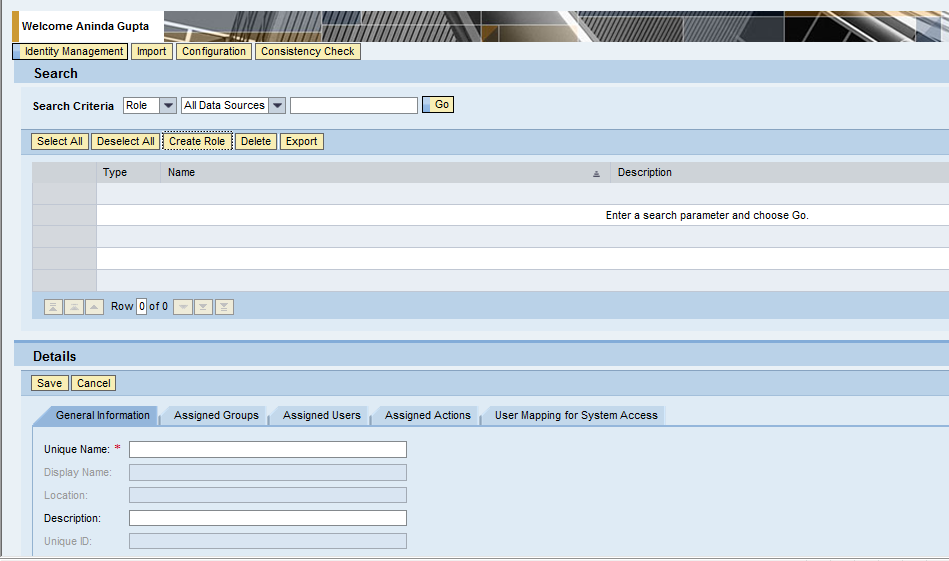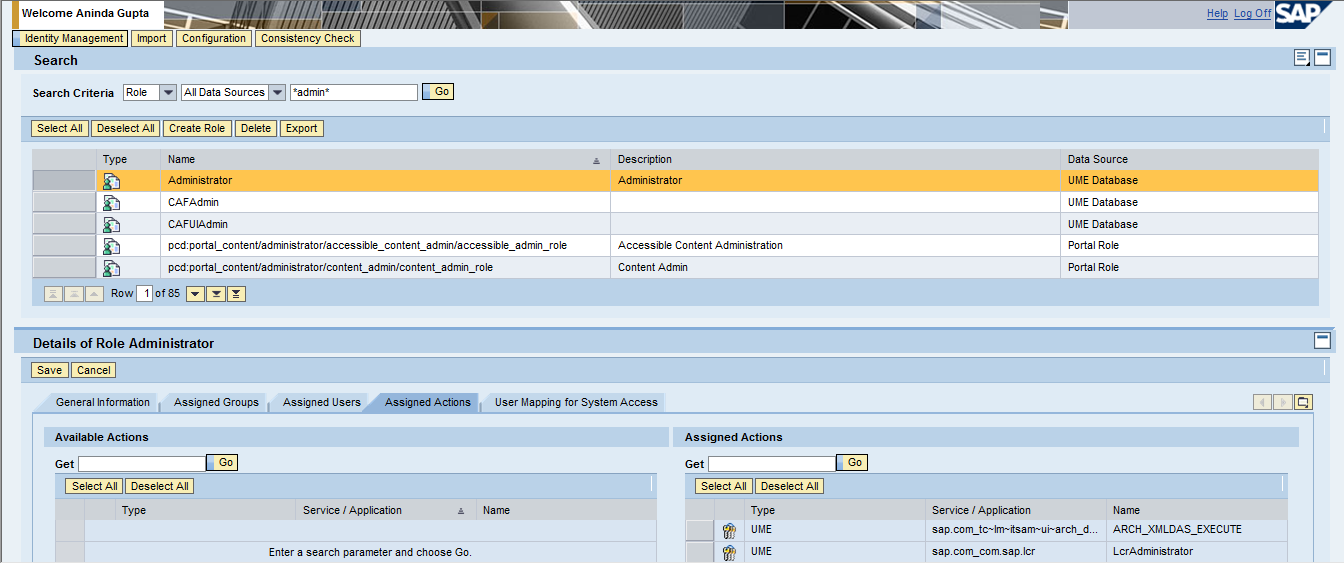UME – Roles
The process of creating a role is technically similar to the process of creating a user. We select “Roles” from the drop down in the initial screen and click the “create role” button. At this point a subscreen opens where we add the details for the role.

UME roles are a bit different from ABAP roles as they don’t contain either transactions or authorization objects. The corresponding concept for AS Java are “Actions”. The UME ships with many Actions already defined. The Assigned Actions tab allows us to search for existing actions in UME and also for actions already assigned to the role. We have the option of adding or removing actions from roles. Actions themselves are themselves composed of “permissions”. Permissions are defined by the creators of AS Java applications and checked in Java code before allowing users access. Unfortunately or fortunately we don’t create Permissions or Actions in Identity Management.

The Create Roles application also allows us to assign the role to Users and to UME groups via the respective tabs.
Hi ,
how to idetify the ACTIONS in UME. For EX: in our team trinee is joined for that guy i want to give access to only view.
Is there any such type of Actions available?
this will be great help to train the freshers.
Thanks in advace,
Shanthi
Hi Shanthi,
I am not aware of any quick and dirty way of identifying actions, but this might be due to my own limited knowledge on the subject. The actions are exposed by the individual java applications and would change across different apps. Most of the time, the documentation around the java applications talk about the actions or roles needed for a particular functionality. Such is the case for any of the GRC applications, where the installation guides talk about the actions/roles needed.
Regards,
Aninda
Thanks for kind response ….and i dint expected this kind of response
‘I am not aware of any quick and dirty way of identifying actions’